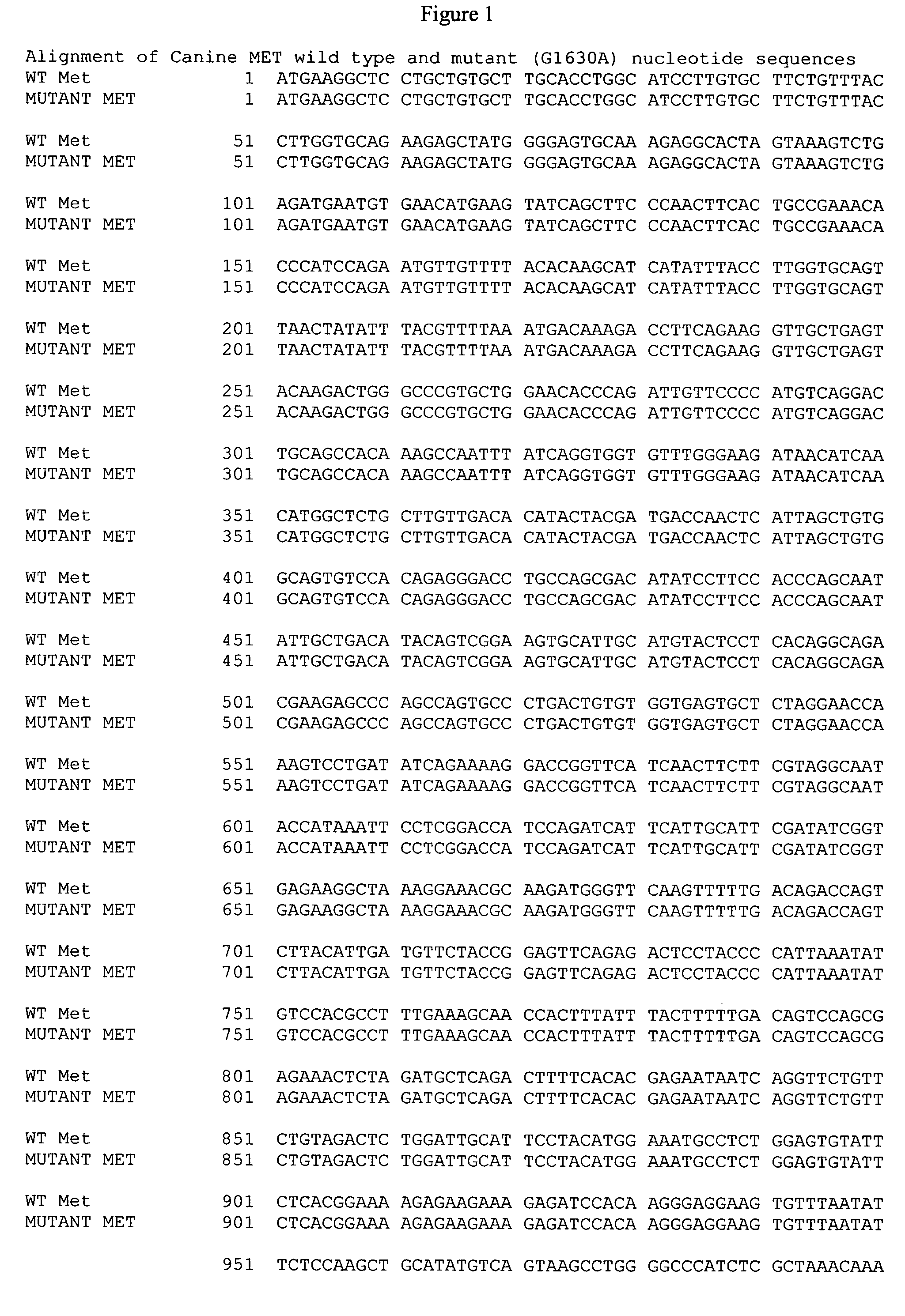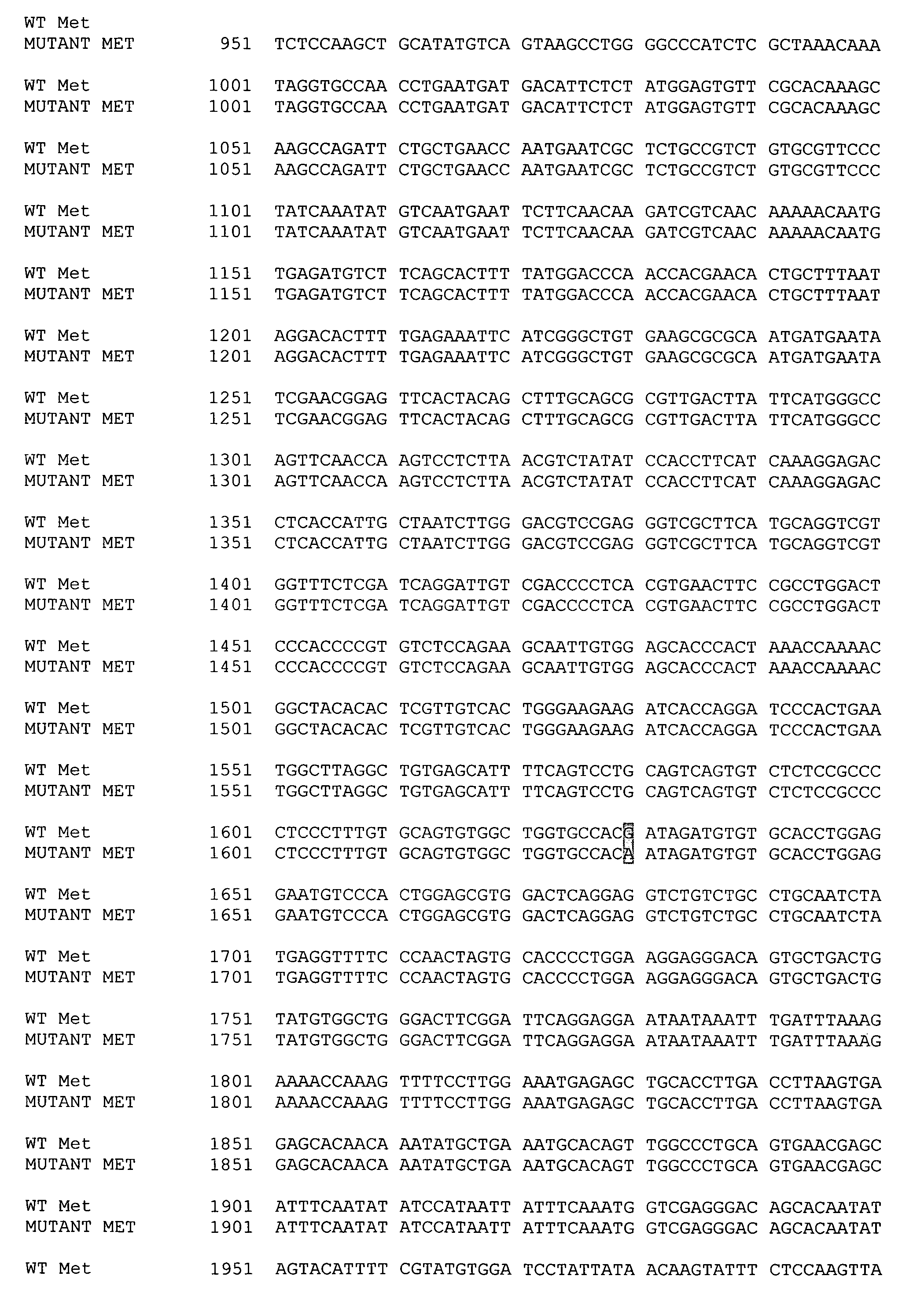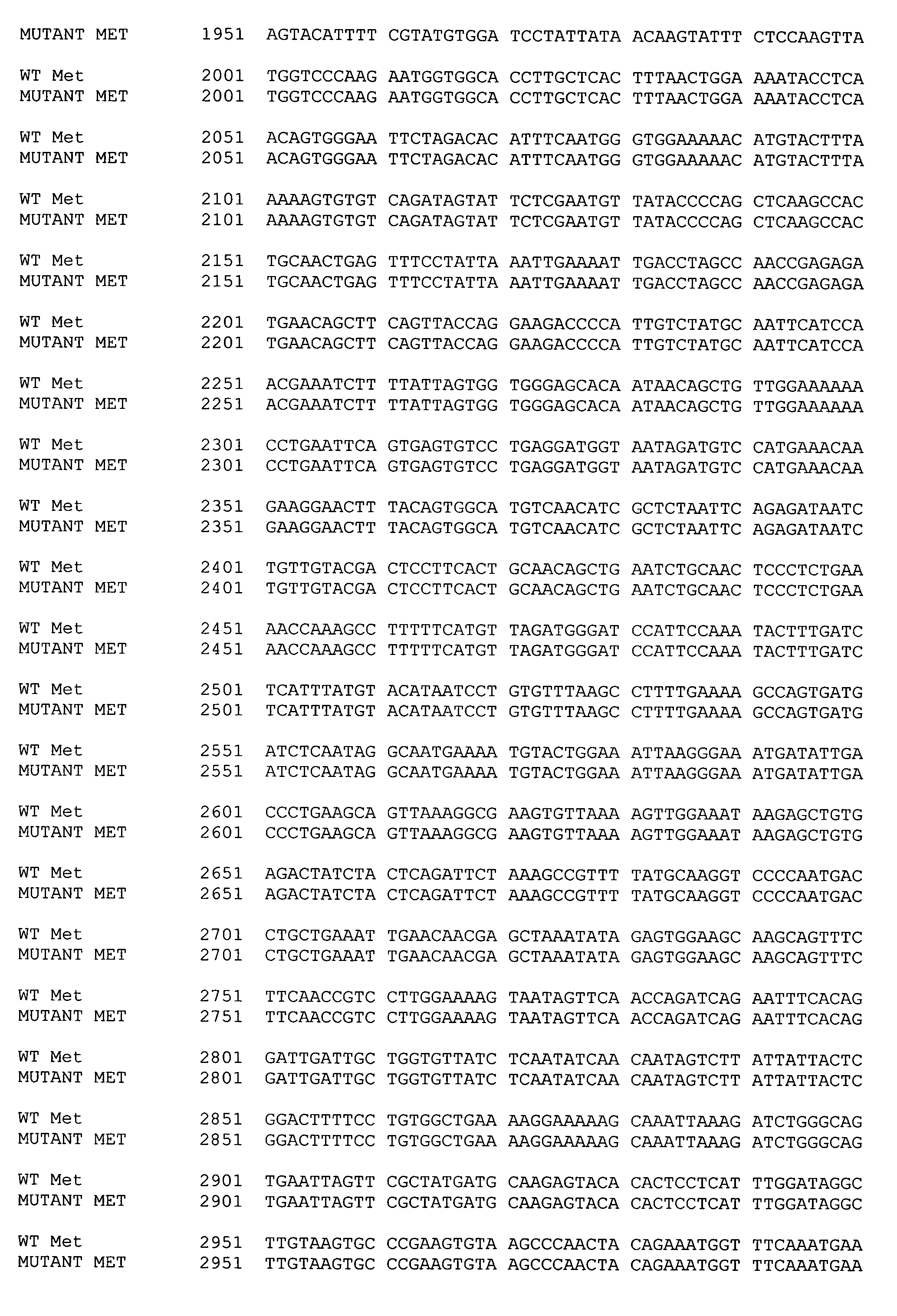Mutant met and uses therefor
a technology of met and mutant, applied in the field of mutant met and uses therefor, can solve the problems of less than 20% of patients to survive longer than 2 years, and the recent efforts to co-administer adriamycin and a platinum compound have not improved survival times
- Summary
- Abstract
- Description
- Claims
- Application Information
AI Technical Summary
Benefits of technology
Problems solved by technology
Method used
Image
Examples
example 1
Cloning of Met, HGF, and HGFA
[0132] We cloned canine Met, HGF and HGF activator (Genbank Accession Nos. AY543631, AY543632, AY532633, respectively), to develop reagents appropriate for RT-PCR, immunoprecipitation and Western blotting. Canine Met is 1382 amino acids in length and exhibits 88% homology with the human sequence and 87% homology with the murine sequence; HGF is 731 amino acids in length and exhibits 90% homology with the human sequence and 91% homology with the murine sequence; HGF activator is 655 amino acids in length and exhibits 81% homology with the human sequence and 74% homology with the murine sequence. We then evaluated the expression of Met and HGF mRNA in 4 canine OSA cell lines (OSCA2, OSCA8, OSCA11M and D17). All were found to express Met and HGF mRNA and all expressed HGFA mRNA with the exception of the D17 cell line.
example 2
Identification of the Canine Met D544N Mutation
[0133] We next evaluated the phosphorylation status of Met in the OSA lines and determined if recombinant human HGF (rhHGF) was capable of eliciting an appropriate response. rhHGF induced phosphorylation of canine Met in all cell lines tested in a dose dependent fashion, with maximal stimulation occurring at 50 ng / ml. Interestingly, the D17 line exhibited a low level of basal phosphorylation in the absence of HGF stimulation. Subsequent evaluation of Met in this line demonstrated the presence of a point mutation in the extracellular domain leading to an amino acid change consisting of Asp544Asn (D544N). It is possible that this mutation results in the basal phosphorylation of Met in this cell line.
[0134] We next screened a number of additional canine tumor cell lines for the presence of the D544N mutation. The human osteosarcoma cell line, U2OS, was purchased from American Type Culture Collection (Manassas, Va.) and maintained in McCo...
example 3
Identification of the Canine Met G966S Mutation and Analysis of Mutation Incidence and Expression Patterns of Met in Canine OSA Samples
[0137] We identified a mutation in the intracellular juxtamembrane domain in one of the OSA cell lines two canine OSA cell lines OSA11M and OSA2. This mutation is present in leads nucleotide substitution at position 2896 (G2896A), resulting in an amino acid change of glutamine to serine at position 966 (G966S) located in the juxtamembrane domain of Met, encoded by exon 14. The presence of the nucleotide change introduced a restriction cutting site for DdeI permitting rapid identification of the mutation through a simple PCR-restriction digest assay. Canine Met was used as a template to design a forward primer (gcaatccacgagcccatgag) for use on genomic DNA, with the reverse primer (gtagttgggcttacacttcggg) placed in the 3′ end of exon 14. Following PCR, DdeI digest is performed and the products are then resolved on a 3.5% agarose gel by electrophoresis...
PUM
 Login to View More
Login to View More Abstract
Description
Claims
Application Information
 Login to View More
Login to View More - R&D
- Intellectual Property
- Life Sciences
- Materials
- Tech Scout
- Unparalleled Data Quality
- Higher Quality Content
- 60% Fewer Hallucinations
Browse by: Latest US Patents, China's latest patents, Technical Efficacy Thesaurus, Application Domain, Technology Topic, Popular Technical Reports.
© 2025 PatSnap. All rights reserved.Legal|Privacy policy|Modern Slavery Act Transparency Statement|Sitemap|About US| Contact US: help@patsnap.com



